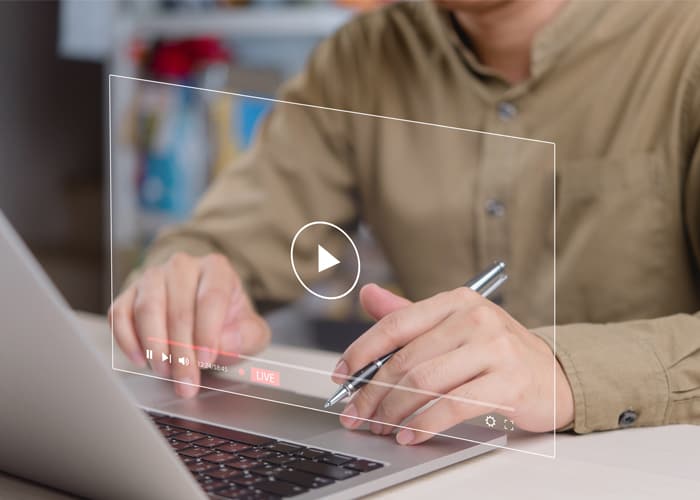7 reasons school districts shouldn’t rely on YouTube for public meeting streaming
Many school districts and school boards use YouTube to stream and store their public meeting videos. It’s easy, well-known, and basic accounts are even free.

But most school districts and school boards have no idea of the potential pitfalls to such an approach until they are faced with content that is removed, placed alongside inappropriate advertising, or used in some manner by YouTube without their permission. Only then do district staff typically discover that all of theses things are allowed and clearly outlined under YouTube’s Terms of Service (TOS).
If your district uses YouTube, you may want to think about these 7 reasons why school districts and school boards are shifting away from YouTube.
According to its TOS, YouTube “allows you to discover, watch, and share videos and other content, provides a forum for people to connect, inform, and inspire others across the globe, and acts as a distribution platform for original content creators and advertisers large and small.” There is no mention of school districts or any public service purpose or public policymaking at all. YouTube is a social media platform with the espoused purpose of entertaining and making money from that entertainment.
Video streams or recordings of school board meetings don’t do much to help YouTube achieve its business goals — they don’t attract advertisers or most of the demographic that YouTube’s existing advertisers seek to connect with. From a business perspective, public meetings are simply dead weight content on YouTube’s platform, so there is no economic incentive to cater to school board needs.
School board members may be surprised to learn that by posting content to YouTube, the school district actually licenses YouTube the right to use that content. The “Rights You Grant” section of YouTube’s TOS clearly states:
“You retain ownership rights in your content. However, we do require you to grant certain rights to YouTube and other users of the Service, as described below. By providing Content to the Service, you grant to YouTube a worldwide, non-exclusive, royalty-free, sublicensable and transferable license to use that Content (including to reproduce, distribute, prepare derivative works, display and perform it) in connection with the Service and YouTube’s (and its successors’ and Affiliates’) business, including for the purpose of promoting and redistributing part of all of the Service.”
Essentially, school boards and YouTube share joint custody of your content and each of you can use it for your own purposes.
By uploading content to YouTube — and thereby agreeing to its TOS — school boards authorize YouTube to generate profits from your videos and other content. That monetization can take the form of ads on or within your content or through access fees as explained in the “Right to Monetize” section:
“You grant YouTube the right to monetize your Content on the Service (and such monetization may include displaying ads on or within Content or charging users a fee for access). This agreement does not entitle you to any payments.”
By streaming or posting videos to YouTube, school boards grant it the right to place ads before, after, and during videos of public meetings, and use those videos or portions of those videos for a wide range of money-making endeavors. Furthermore, the license you grant to YouTube extends — for a “commercially reasonable time” — even after you remove or delete your content.

YouTube is a corporation and not subject to the same First Amendment requirements that school districts and other public sector agencies face. It is not required to post public content or even to publish it for entities that are required to post such content. And, as stated in the “Removal of Content by YouTube” section, YouTube may remove posted content when it deems such removal necessary:
“If any of your Content (1) is in breach of this Agreement or (2) may cause harm to YouTube, our users, or third parties, we reserve the right to remove or take down some or all of such Content in our discretion.”
School boards are not notified of content removal after the removal occurs. Most Granicus customers who have experienced the removal process were alerted to the situation by members of the public looking for meeting videos. The “Content Violations” section of the Community Guidelines explains it plainly:
“If your content violates this policy, we will remove the content and send you an email to let you know. If we can’t verify a link you post is safe, we may remove the link. Note that violative URSs posted within the video itself or in the video’s metadata may result in the video being removed. Partners will help you streamline operations, empower your staff, and improve transparency, all while preparing your office for future challenges.
Once content is removed, it’s an uphill battle for school districts to have it restored. According to the latest data available from a 2020 YouTube report, of the nearly 110,000 videos removed by YouTube in a three-month period, fewer than a quarter were later restored. An article analyzing the report wrote that “the vast majority of these videos were removed automatically (meaning a human did not oversee the removal), and more than 60% were removed just before the video collected any views. YouTube’s report also states that [during that same time period] just over 2 million channels were removed.”
YouTube employs a “three strikes” approach to Community Guidelines violations. As explained in the “Content Violations” section, your first violation will likely incur a warning and required training, with subsequent violations earning a “strike.” Three strikes within a 90-day period results in your channel being terminated.
YouTube does provide an appeals process to challenge the removal of content. However, if your video is removed, you may not use another YouTube channel to post it while your removal is under appeal. Doing so may result in the complete deletion of your YouTube channel, as stated in the “Community Guidelines Strikes” section.
In the worst possible scenario, after multiple violations or a single egregious violation, YouTube may delete your entire YouTube channel, as described in the “Content Violations” section:
“We may terminate your channel or account for repeated violations of the Community Guidelines or Terms of Service. We may also terminate your channel or account after a single case of severe abuse, or when the channel is dedicated to a policy violation. We may prevent repeat offenders from taking policy trainings in the future.”
Once content has been removed by YouTube, it can be a long and arduous process to have it restored, and multiple removals can mean that you no longer have access to your YouTube channel at all.
Many school boards point to YouTube’s ease of use, for staff, members of the public, and parents. However, most built-for-public sector video solutions are at least easy to use for staff, and less cumbersome for the public. In fact, there are many reasons why the YouTube viewing experience is sub-par for members of the public or parents who want to gather important information from their school district.
Along with ads before, during, and after the video, it’s often difficult for parents and residents to find the part of the meeting where the subject they want to find.
There is no denying the fact that YouTube is a budget-friendly video streaming solution. But, it’s just that, and in many cases school boards and their viewers are getting exactly what the district pays for. More than ever, the importance of a well-informed, engaged populace for productive public policymaking is clear.
When delivering critical information, school boards must consider the delivery vehicle as well. If you want parents and your community to be well-informed on serious topics of public policy, YouTube might not be the best delivery tool for that information.
Granicus built-for-government video solutions are designed specifically for your needs, with state-of-the-art security and reliability baked in. We offer three different video solutions for varying budgets, staff sizes, and goals:
Your content is always yours, and only yours — we would never use your content without your permission — and we don’t delete your content at any time without providing you with the opportunity to migrate all of it. Obviously, our solutions don’t include any ads or other monetization functions, and your video viewers never have to create a user account, even to receive video posting notifications.
Granicus video solutions all include the ability to index meeting agenda items to the places in the video where they are discussed, allowing viewers to jump to specific points of interest without using the fast forward function through a multi-hour meeting. They also include sensitive search features so viewers can locate mentions of topics or issues they are most concerned about.
Additionally, Granicus understands the legal and ethical motivations for government bodies to provide accessible content. Our products deliver unsurpassed support for content creators to deliver information that is available and accessible for everyone in the community. We offer multiple closed captioning options for our video solutions based on variable levels of accuracy, speed of delivery, and cost. Importantly, our captioning product with the lowest accuracy still beats YouTube’s accuracy by 20% or more; imagine the difference that can make for a viewer using captioning. Also, our transcription services are the best in the industry and many school boards use them to create required minutes post-meeting.
Finally, Granicus video solutions are designed to create less work and more efficiency for staff. They are simple to use, and some options provide partial or total meeting video management. Viewers can watch the live stream directly on your website without logging in or sitting through annoying ads. Our subscriber notification systems enable community members to receive direct notifications when meeting materials and videos have been posted. And speaking of posting video recordings, with a Granicus solution, your meeting recordings can be posted directly to your website with a simple click — no uploading or waiting for buffering.
